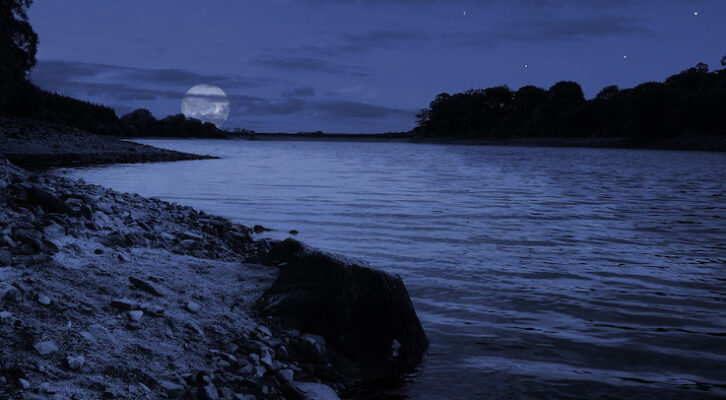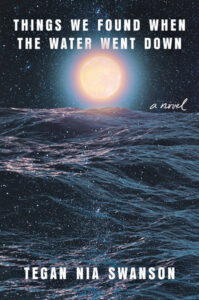
Tegan Nia Swanson on How to Tell a True Survivor Story
"Storytelling allows us to trace rivers of influence and generational patterns back and forth from their source."
Imagine, in order to access safety, healing, or justice, you must tell us all a story. Except the only way to do so is to return to the worst moments of your life, re-live them in body and brain, and then utter these humiliations and terrors aloud, into daylight. Imagine that to be deemed credible, you must—at the same time as you are re-experiencing everything—recite cohesively, chronologically, but not so rehearsed as to sound scripted.
You must speak with specificity for things you have no language to describe, but not without emotion, at the risk of sounding robotic. You must offer approved proof, though there may exist no evidence except the memory that is your body. Offer your body, photos of bruises and blood, but do not have agency of your body, seek pleasure, or rest. Don’t be too strong, in case they think you are aggressive or angry. It’s definitely not okay to be angry.
To be determined deserving of protection, you must present your pain in a court: mere yards from the person who harmed (may still be harming) you; overheard by a room full of strangers and family members; to an authority figure with a gun or a badge or a gavel. To be determined deserving, you must be quiet and sweet, quick to agree. You’ll have to repeat this twelve, thirteen, fifteen times, and don’t you dare shift any details your traumatized body and brain will have a hard time remembering. Do not contradict, question, or have uncomfortable queries of people in power. Yes, we all hate these rules because they are dehumanizing, but these are the laws of societal justice. This is the game we are forced to play.
*
As an advocate for survivors of domestic and sexual violence, I support folks seeking safety and justice. In recounting their experiences of harm to retraumatizing systems, most do not have the option to be risky, to resist. In the wake of Tarana Burke’s #MeToo movement, there has been a proliferation of stories across platforms, genres, and mediums about domestic, sexual, and other gender-based violence. Mainstream media coverage of real-life stories has expanded too, though this still tends to center survivors of a certain class and race, to perpetuate harmful white feminisms, misogynoir, and transphobia. Victims are pilloried or murdered or both. People who harm are vilified and abandoned, or elected and lionized, depending on their connections and their kin. Advocacy organizations operate understaffed, un(der)paid 24-hour helplines, housing programs, safety resources, therapeutic groups, and prevention initiatives on continuously vulnerable budgets.
Compare Wisconsin’s dire status as the 8th highest in national domestic violence homicides to our legislature’s continual gutting of workers’ rights and social services in favor of funding law enforcement and prisons. Compare those most likely to be trafficked or murdered to our history of redlining, genocidal boarding schools, environmental degradation, and reproductive oppression.
We all hate these rules because they are dehumanizing, but these are the laws of societal justice.
Still, across thousands of safety meetings, forensic interviews, and testimonies, the majority of survivors I have had the honor of standing beside have one stark and powerful thing in common: they say they want their voices to be heard. It breaks my heart to witness, over and over, the myriad ways systems punish them for it. Amplified coverage of the systemic oppressions of our Black, Indigenous, queer, undocumented, and disabled loved ones has spurred a minor reckoning in the collective cognizance, but not a tide of transformative change in civic or legal systems. Stories abound about how we value some and not others, how our systems exert power and control: Emmett Till and Carolyn Bryant; the Exonerated Five; #IAmVanessaGuillén; Chanel Miller’s Emily Doe; Gabby Petito or Rae Elaine Tourtillott. It is clear to me as an advocate that the stories we re-tell do not serve us.
Why didn’t they leave? or why didn’t they just call the police? or why didn’t they tell someone? are all tired, victim-blaming refrains—but the systems that exist almost mandate we begin with those questions, even when we know we don’t want to. We get caught in these loops and it’s infuriating, because we also know inequity is an increasingly intentional outcome.
So imagine instead: you are a survivor, and you want something more. Imagine you want neither to send yourself nor another into the jaws of the criminal legal machine. What can help us dream a new world into being?
In my novel, Things We Found When the Water Went Down, there is trauma, and there is the active grappling with ways to talk about it. In simple terms, it is a story about a mother and a daughter and a drowning. But its experimental forms resist classification; its collage of feminist, queer, and eco-noir content come together to offer a critique of our oppressive cis-white-hetero-patriarchy and its traditional responses to harm and healing.
By indicting the failures of carceral legal systems in police reports, deposition transcripts, and reticent interviews, Things We Found When the Water Went Down echoes the fierce, insistent refrain of Black feminist abolitionists like Mariame Kaba and Ruth Wilson Gilmore: if we are to protect our own humanity, we must respond to harm differently. Telling a story about trauma is as much about an individual incident as it is the slower, more complex truths that bloom in the novel’s non-linear, cyclic structure, in its communal narration, the societal context offered by its footnotes, excerpts, and archival footage.
Queering expectations of structure, genre, and archetype reflect what similar healing space is available in possibilities outside the gender binary. Colonizer violence against the land, against water, is a mirror of white patriarchal violence against the body. These harms are not singular, nor are their healing. It is not a simple or an easy read, and I knew these narrative choices were a risk. But that risk was rooted in a call, a responsibility, an obligation I felt to build a truer story.
Where rigid, dehumanizing systems fail, these paradigms promise fluid, contradictory freedom.
Whereas a witness would be quieted or a piece of evidence deemed irrelevant in a courtroom, storytelling allows us to trace rivers of influence and generational patterns back and forth from their source. As part of my advocacy work I witness systemic violences, but I also amplify more hopeful, holistic, and unexpected iterations of what the Rev. Dr. Martin Luther King, Jr. referred to as the Beloved Community. If we have been told the only justice for harm is more harm, we will replicate that—but we also have more agency to change those possibilities than we think, and more responsibility to show up in the labor of building that vision.
Lama Rod Owens insists we can—and likely must—be both angry and loving. adrienne maree brown calls it the “imagination battle” of emergent strategy and transformative justice. Where rigid, dehumanizing systems fail, these paradigms promise fluid, contradictory freedom, and a blueprint for our communities. One small step in building that world is in allowing each other the space to tell our own truest stories.
*
Imagine, in order to access safety, healing, or justice, you are not obligated to do anything but ask for support. Imagine someone invites you to start at the beginning. Or rather start wherever feels right, to start with the one you want us to hear instead of the one we expect you to tell us. Imagine someone invites you to trust your voice. Speak softly or holler. Begin again and again. Stay quiet for as long as you need. Start in the middle, where the soft, bruised roots linger. Let the scenes and details cycle back and wind outward, because that’s how memory really functions. Start at the end, if you feel that there is one.
Be unreliable. Contradict yourself. (We are all large. We all contain multitudes.) Ask others to reflect you, those who have witnessed you and this scene, whose own stories are entangled with yours. (We exist in community; we make meaning there, too.) Ask others for help. Ask others to hold you accountable. Maybe a stranger can hold something too heavy for you. Maybe a loved one can remember something you are forgetting. Use footnotes, and charts, and research, and maps, if you find numbers and statistics helpful. Use paint and photographs and melodies, too, for when emotions are intangible.
Say the hard part out loud. Start with discomfort. Start with the dream you’ve been dreaming. Borrow language. Juxtapose supposedly disconnected pieces of information like prisms. Invent new ways to tell your own story, because we need them.
__________________________________

Things We Found When the Water Went Down by Tegan Nia Swanson is available from Catapult.
Tegan Nia Swanson
Tegan Nia Swanson is an advocate, educator, artist, gardener, and UU-Buddhist, most at home while in or near large bodies of water, or walking under the canopies of many trees. Things We Found When the Water Went Down is her first novel.



















